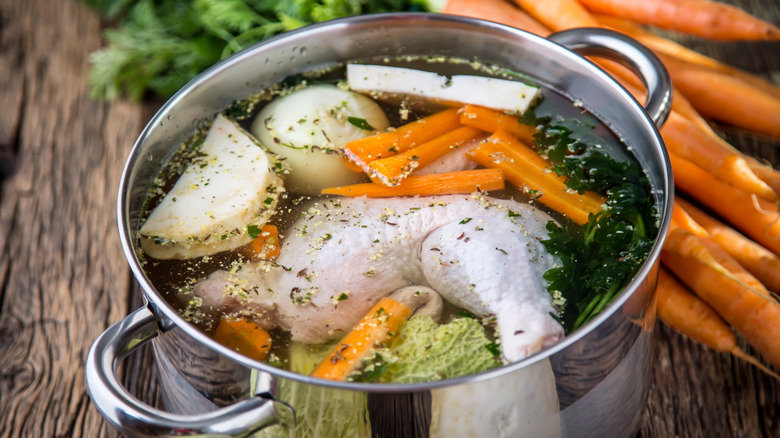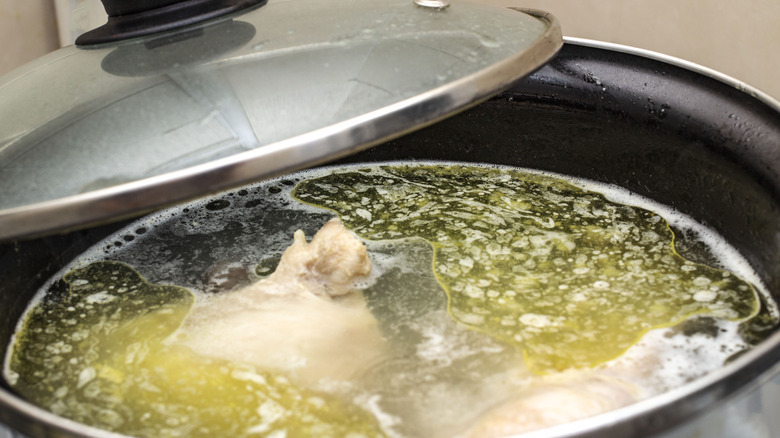The Flavor Mistake You're Making When Boiling Chicken Is In The Water
Boiling chicken is a quick and easy way to cook it for soups, stews, pulled chicken, and more — and it's one of the healthiest ways to cook chicken, too. Boiled chicken breasts aren't exactly flavorful on their own, though, which is why many recipes call for them to be paired with bold sauces or spices.
But if you're just using plain water to boil your chicken, you're making a big mistake. Instead, you should be seasoning the water. Even adding salt goes a long way, but you can experiment by adding different ingredients to the water when boiling chicken.
Consider this: When you make chicken stock, you're essentially making boiled chicken, too. The easiest way to improve the water for boiled chicken is with traditional mirepoix vegetables like onion, carrot, and celery. You can also amp up the flavor of boiled chicken by replacing the water entirely. Poaching chicken in white wine or cider can impart more sweetness, and subbing in prepared chicken stock or broth lends more savoriness.
But seasoning alone won't completely fix the mistakes you might be making when boiling chicken. When it comes to the water, paying attention to temperature can make or break boiled chicken.
Besides lacking seasoning, temperature control is a huge mistake in boiled chicken
Seasoning your water is not the only important aspect of boiling chicken; improper temperature control is another way people commonly go wrong. Whether you're using water or another liquid, the right way to boil chicken involves starting cold. Instead of dropping chicken into already-boiling water, let the meat come up to temp with the liquid. This way, the chicken will cook evenly — and if you plan to use the boiling liquid as stock, it'll be less cloudy, too.
And when it comes to temperature, maybe we're wrong for boiling it at all: Cooking chicken in water that's at a hard or rolling boil could actually be counterproductive. For one, the harshness of boiling itself pulls out oils, which is why chicken cooked that way can paradoxically come out dry.
Additionally, there's the scum problem. You've probably noticed that boiled chicken develops a foam on the surface of the water. This grayish, unappetizing foam is actually known as scum, and it's made up of proteins that have denatured, or broken down, due to the heat. While it's technically edible, it could represent that valuable nutrients — which would've otherwise either stayed in the chicken or in the liquid stock — have been destroyed.
You can fix the water-temperature mistake by bringing well-seasoned water from cold to a boil, then immediately dropping it down to a simmer to finish cooking the chicken. This way, the chicken is more likely to stay moist, not produce scum, and — most importantly — taste great.

